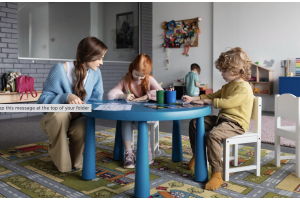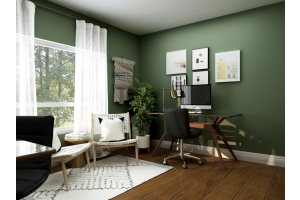Creative Planting Ideas for the Best Window Boxes

Window boxes add charm and character to your home while offering space to grow plants that bring life to your outdoor spaces. Choosing the right planting strategies can make a significant difference in the impact of your window boxes. Below are some practical and creative ideas for making the most of your window box plantings.
Mix Flowers and Edibles for a Functional Window Box
You can turn your window box into more than just an ornamental feature by combining flowers with edible plants like herbs, leafy greens, or even small vegetables. For example, pair colorful pansies with parsley or mix trailing nasturtiums with basil. This not only looks appealing but also offers fresh ingredients for your kitchen.
If you’re considering upgrading or customizing your window boxes, you might want to visit Flower Window Boxes to explore durable and stylish options. A well-designed window box can better support mixed plantings, giving you flexibility in choosing plants that thrive together.
Use Layering for a Full, Balanced Look
Layering plants by height creates a balanced, aesthetically pleasing arrangement. Start by placing taller plants, such as salvia or snapdragons, toward the back of the box. Use medium-height plants like marigolds or geraniums in the middle, and finish with trailing plants like ivy or petunias at the front.
This technique ensures every plant has its space to shine. Additionally, layering helps with airflow, reducing the risk of diseases that can occur in crowded plantings. Experiment with contrasting textures and colors to create a visually engaging display.
Opt for Seasonal Themes
Rotating your plants seasonally allows you to keep your window boxes fresh and timely throughout the year. For spring, consider tulips, daffodils, or hyacinths. In summer, go for vibrant blooms like zinnias, begonias, or lobelia. Mums, ornamental kale, and pansies make excellent choices for fall, while evergreens, holly, and even miniature conifers work well in winter.
To enhance the seasonal feel, you can also incorporate small decorative elements like pinecones in winter or gourds in autumn. Seasonal planting keeps your window boxes relevant and prevents the monotony of static arrangements.
Try a Monochromatic Color Scheme
Using a single-color family can create a striking and cohesive look. For instance, a mix of white flowers, such as petunias, alyssum, and calibrachoa, gives a clean and serene appearance. Similarly, an all-purple box with lavender, verbena, and purple basil can make a bold statement.
Monochromatic schemes are easy to maintain because they don’t require you to juggle contrasting plant needs. Focus on plants with similar sunlight and water requirements to keep the maintenance straightforward.
Incorporate Native Plants
Native plants are well-adapted to your local climate and often require less maintenance compared to exotic species. Look for native flowering plants, grasses, or succulents that thrive in your area. For example, in drier climates, you could use drought-tolerant plants like sedum or echinacea.
Using native plants also supports local pollinators like bees and butterflies, contributing to a healthier ecosystem. Pair native species with low-maintenance foliage for a stress-free window box planter that still looks fantastic.
Experiment with Vertical Interest
Incorporating plants with vertical growth habits can add depth and variety to your window box planters. Ornamental grasses like fountain grass or the vertical spires of lavender are excellent choices for height. Combine these with spreading or cascading plants to fill out the lower levels.
Vertical elements create a more dynamic visual display, making your window box planters stand out. Additionally, they can frame windows or architectural features, tying your plantings into the design of your home.
Use Foliage for Texture and Contrast
Flowers are not the only stars of a window box planter. Incorporating foliage plants, such as coleus, heuchera, or dusty miller, adds texture and contrast to your arrangement. Foliage comes in various shapes and colors, offering plenty of design flexibility.
You might pair silver-toned dusty miller with vibrant flowers to create a balanced look or use variegated ivy to provide a dynamic, cascading element. Foliage plants are often hardier than blooms, making them a reliable base for your window box throughout the seasons.
Create a Pollinator-Friendly Window Box
Choose plants that attract bees, butterflies, and hummingbirds to add life to your garden. Lavender, bee balm, and salvia are excellent options for a pollinator-friendly box. Include brightly colored, tubular flowers to draw hummingbirds, and mix in herbs like thyme or oregano for a multipurpose planting.
Supporting pollinators not only benefits your local ecosystem but also makes your window boxes an active part of a thriving garden environment. Place these boxes near outdoor seating areas to enjoy the added activity and beauty of visiting pollinators.
Combine Evergreens and Annuals
Mixing evergreens with flowering annuals allows you to keep your window boxes looking vibrant year-round. Use compact evergreens like boxwood or dwarf cypress for structure and fill the remaining space with colorful annuals like impatiens or begonias.
This approach provides the reliability of evergreens with the flexibility to change annuals based on seasons or preferences. It’s a versatile strategy that combines longevity with creative expression.
Add Unexpected Elements
For a truly creative touch, incorporate non-plant elements into your window box. Small sculptures, driftwood, or decorative rocks can add an artistic flair. You could also include small lanterns or solar-powered lights for nighttime charm.
These elements can complement your plant choices and make your window boxes more unique. Be mindful of the size and placement of these items to avoid overcrowding and ensure they don't obstruct plant growth.
Conclusion
Applying these strategies helps you create stunning, functional, and easy-to-maintain window boxes tailored to your home and preferences. Whether you focus on a specific theme, experiment with textures, or explore seasonal plantings, there’s plenty of room for creativity. With the right planning and a bit of effort, your window boxes can become standout features that enhance the overall appeal of your outdoor spaces.






